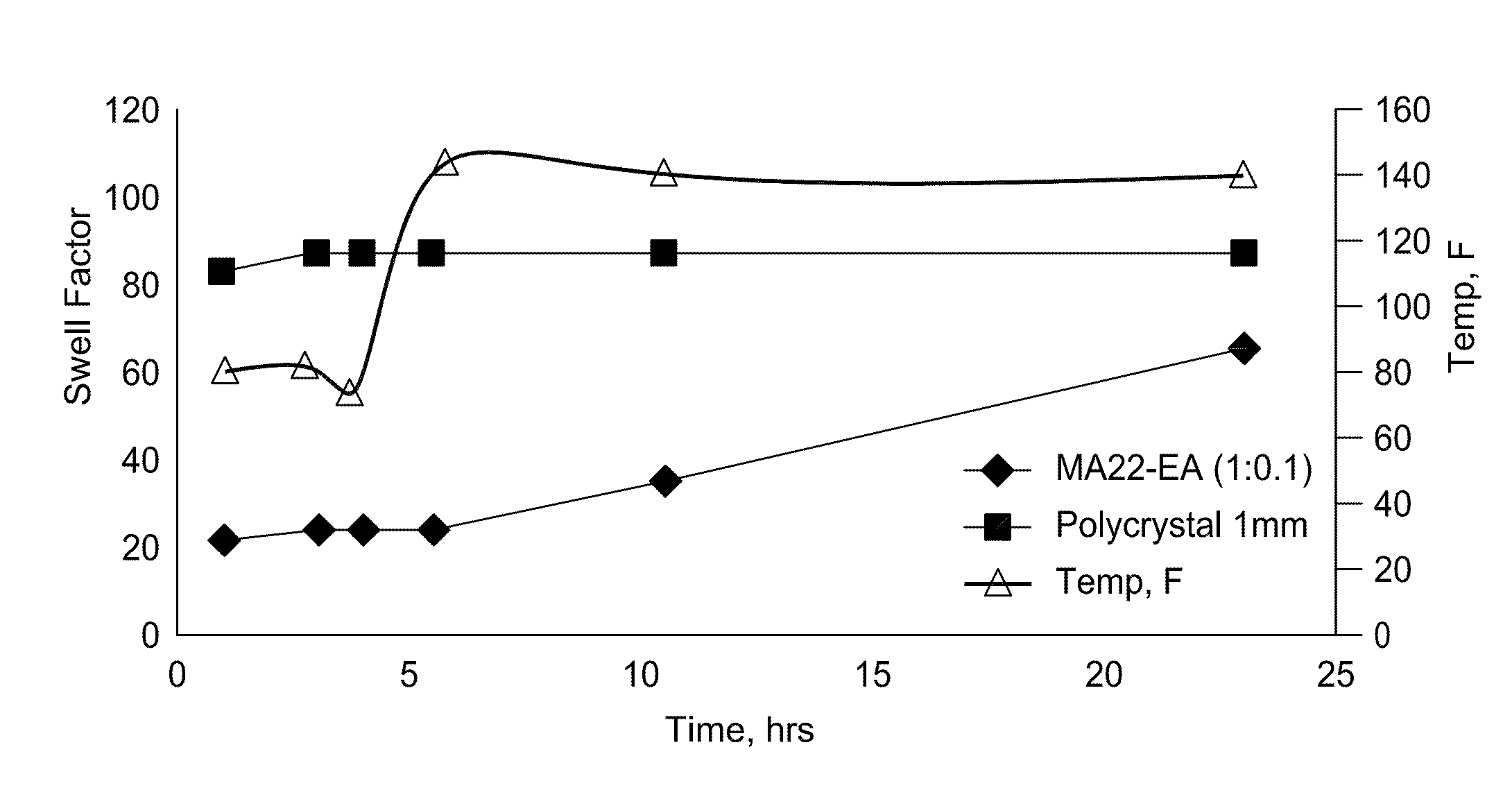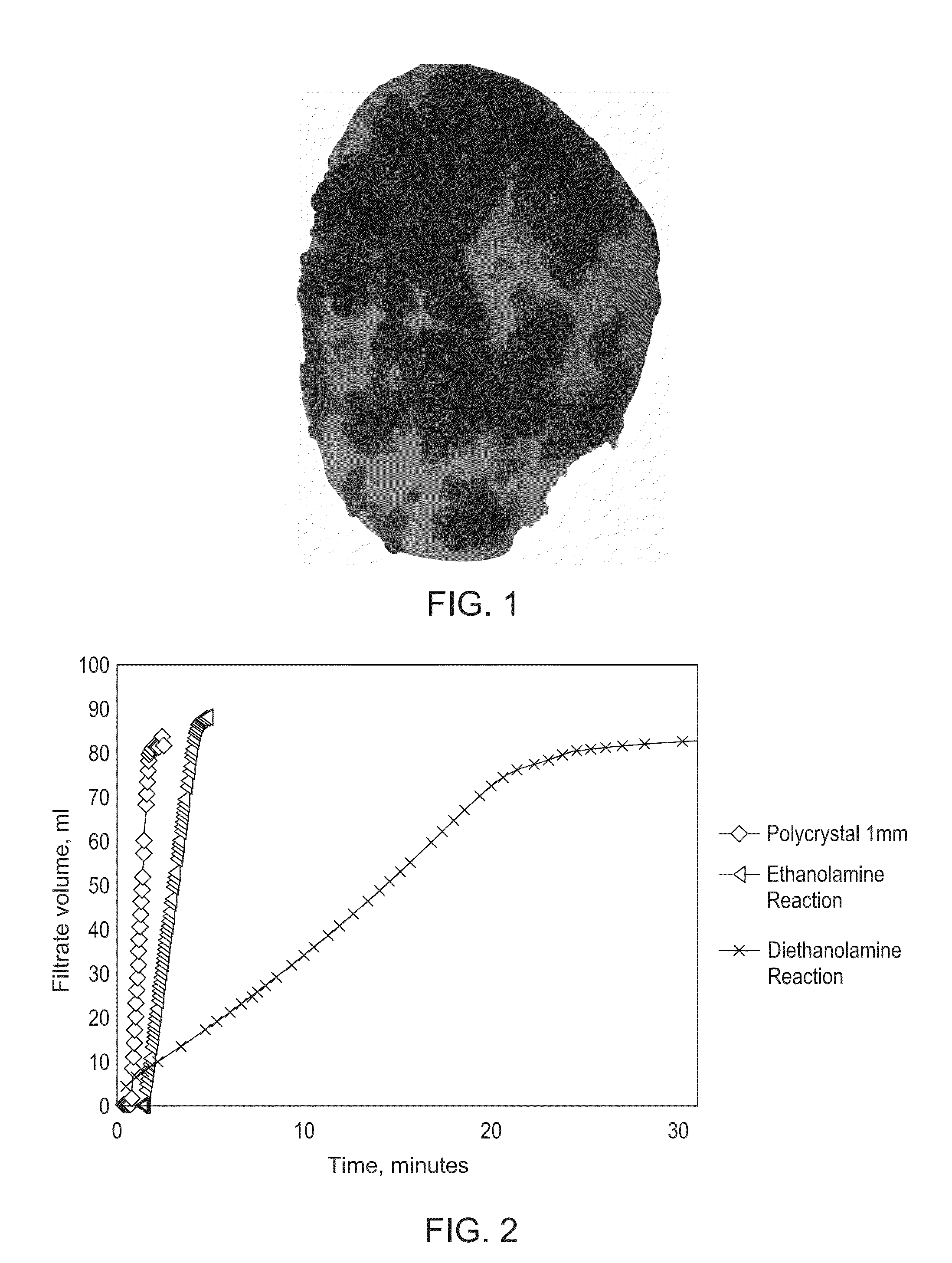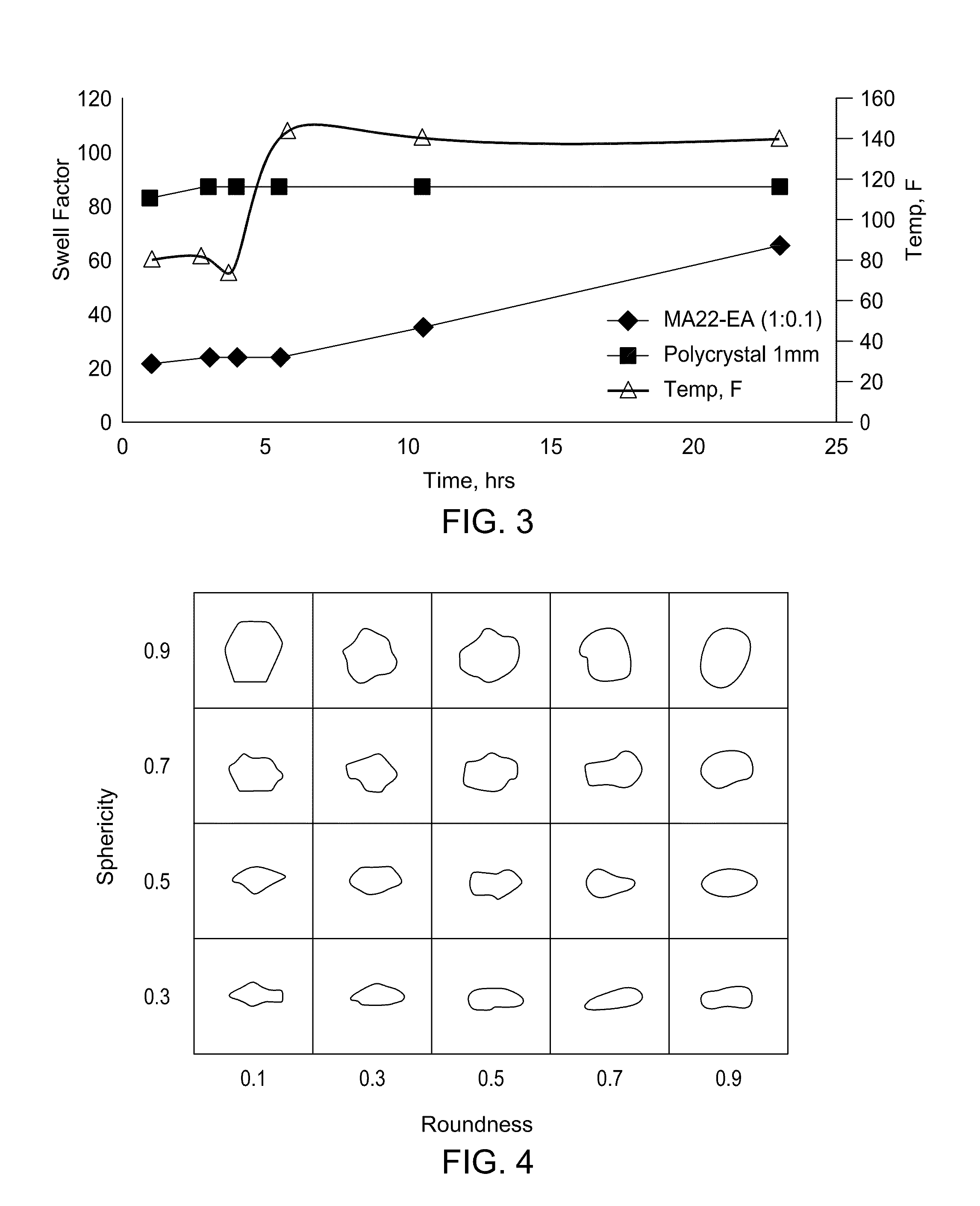Absorbent Polymers, and Related Methods of Making and Using the Same
a technology of absorbent polymers and polymers, which is applied in the direction of sealing/packing, chemistry apparatus and processes, and wellbore/well accessories. it can solve the problems of difficult to completely clean up cross-linked gels using conventional breakers, difficult to remove gel residues from the subterranean formation, and more likely to break rather than deform particles, etc., to achieve the effect of beneficial swollen deformability
- Summary
- Abstract
- Description
- Claims
- Application Information
AI Technical Summary
Benefits of technology
Problems solved by technology
Method used
Image
Examples
example i
[0064]High molecular weight polyacrylamide bead products, MA-22 (available from Halliburton Energy Services, Inc., Duncan, Okla., Mol. Wt, 5 MM, % hydrolysis ˜<5%), ALCOMER® 120B (available from Ciba Specialty Chemicals Water Treatments Limited, Bradford, West Yorkshire, UK, Mol. Wt, 14 MM; % hydrolysis, 30%), ALCOMER®110RD (Mol. wt 11 MM, % hydrolysis ˜22%) and ALCOMER®60RD (Mol. Wt, 5 MM; % hydrolysis, 30%), MAGNAFLOC® 336 (available from Ciba Specialty Chemicals Water Treatments Limited, Bradford, West Yorkshire, UK, anionic flocculant polyacrylamide, mol. wt, 15-20 MM, % hydrolyis, 30%), Alcomer 80 (Mol. wt 9 MM, % hydrolysis, 0%) and ZETAG® 8140 (available from Ciba Specialty Chemicals Water Treatments Limited, Bradford, West Yorkshire, UK, Cationic, high mol. wt polyacrylamide) were surface coated with ethanolamine (EA), diethanolamine (DEA), triethanolamine (TEA) or diethylenetriamine (DETA) at polymer to alkanolamine weight ratio of 1:0.0.5 to 1:0.2 range and rolled in an ov...
example ii
[0068]A homopolymer of vinylpyrrolidone (PVP) was also tested under conditions similar to those used for polyacrylamides in Example I. The results are shown in Table 2 below.
TABLE 2PolymerIn FreshIn 2%to AmineWater, gNaCl, gPolymerAminewt ratioRT140° F.RT140° F.PVP K-90EA1:0.10.3———DEA 1:0.070.25———DEA1:0.12.1—2.1—DEA 1:0.171.6———TEA1:0.20.8———TEPA1:0.11.4———DETA1:0.10.5———
[0069]Surprisingly, the modified PVP products provided swelling rates as high as about 21 times at room temperature indicating the generality of the polymer modification. There are no commercially available PVP based superabsorbent polymer (SAP) materials in the market. Moreover, in view of the non-toxicity and biodegradability of PVP, SAPs based on PVP are particularly useful.
example iii
[0070]Thermally and hydrolytically stable acrylamide-based polymers containing small amounts of 2-acrylamido-2-methyl propane sulfonate (AMPS) and other stable monomers were also tested for their ability to form SAP materials using the procedures described in Example I. The base polymers included HE 100 (AMPS / acrylamide copolymer, and HE 300 (AMPS / vinylpyrrolidone / acrylamide terpolymer). The results are shown in Table 3 below.
TABLE 3PolymerIn FreshIn 2%In 0.5%to AmineWater, gNaCl, gNaOH, gPolymerAminewt ratioRT140° F.RT140 F.RT140° F.HE 100None—00HE 100EA1:0.16.501.20HE 100DEA1:0.10.1000HE 100DETA1:01 UnswollensolidHE 300DETA1:0.18.99.02.833.06.25.0HE 300TEPA1:0.13.4
[0071]The results in Table 3 indicate that thermally stable SAPs can be obtained by modifying copolymers containing thermally stable monomers, such as AMPS with acrylamide as comonomer. Swelling rates as high as 90 times the original weight were achieved.
PUM
| Property | Measurement | Unit |
|---|---|---|
| Time | aaaaa | aaaaa |
| Electric charge | aaaaa | aaaaa |
| Temperature | aaaaa | aaaaa |
Abstract
Description
Claims
Application Information
 Login to View More
Login to View More - Generate Ideas
- Intellectual Property
- Life Sciences
- Materials
- Tech Scout
- Unparalleled Data Quality
- Higher Quality Content
- 60% Fewer Hallucinations
Browse by: Latest US Patents, China's latest patents, Technical Efficacy Thesaurus, Application Domain, Technology Topic, Popular Technical Reports.
© 2025 PatSnap. All rights reserved.Legal|Privacy policy|Modern Slavery Act Transparency Statement|Sitemap|About US| Contact US: help@patsnap.com



